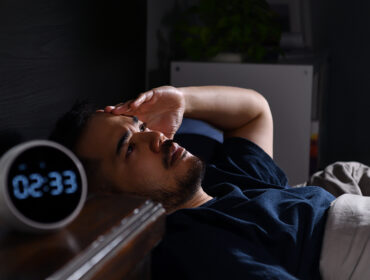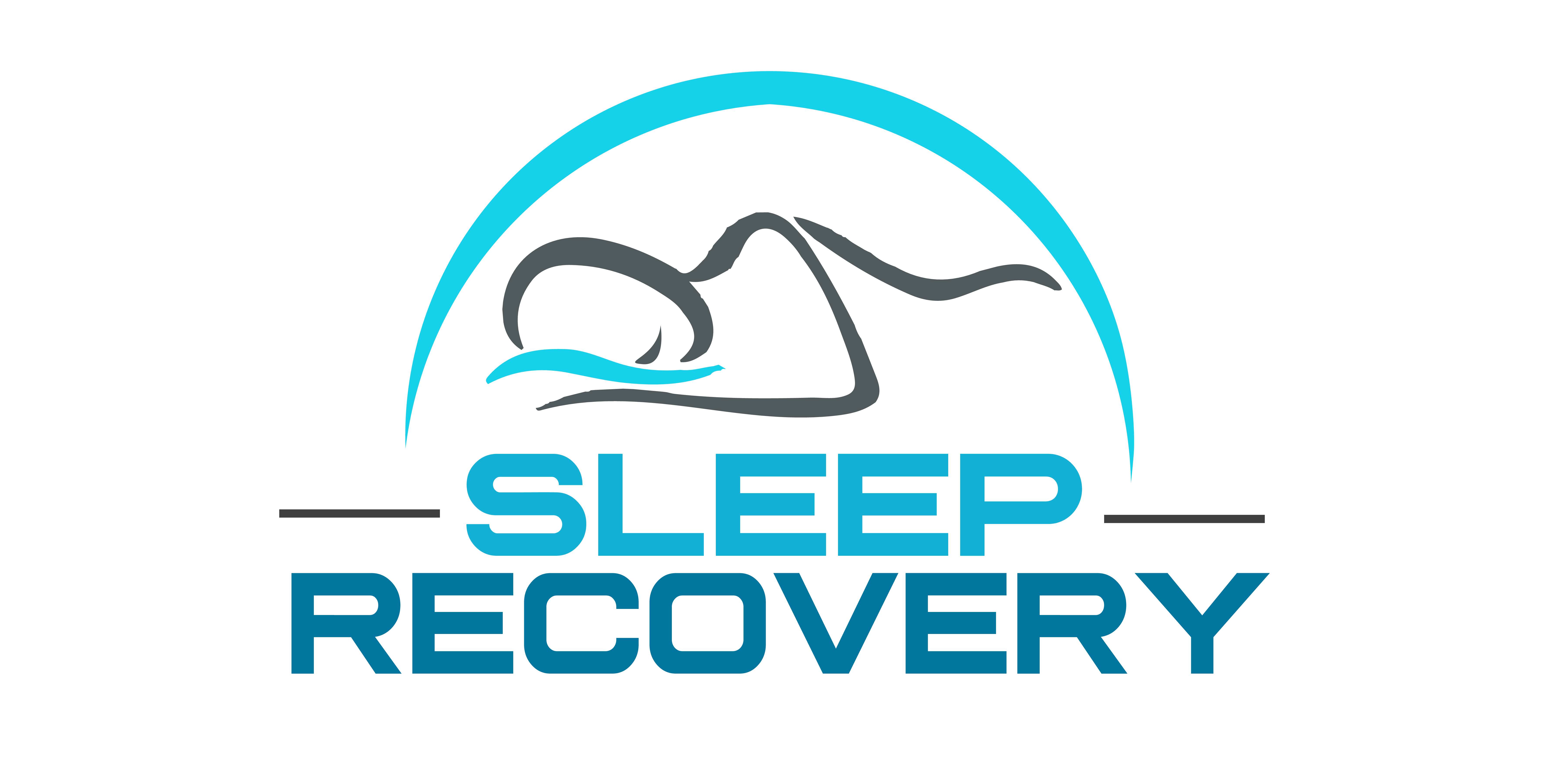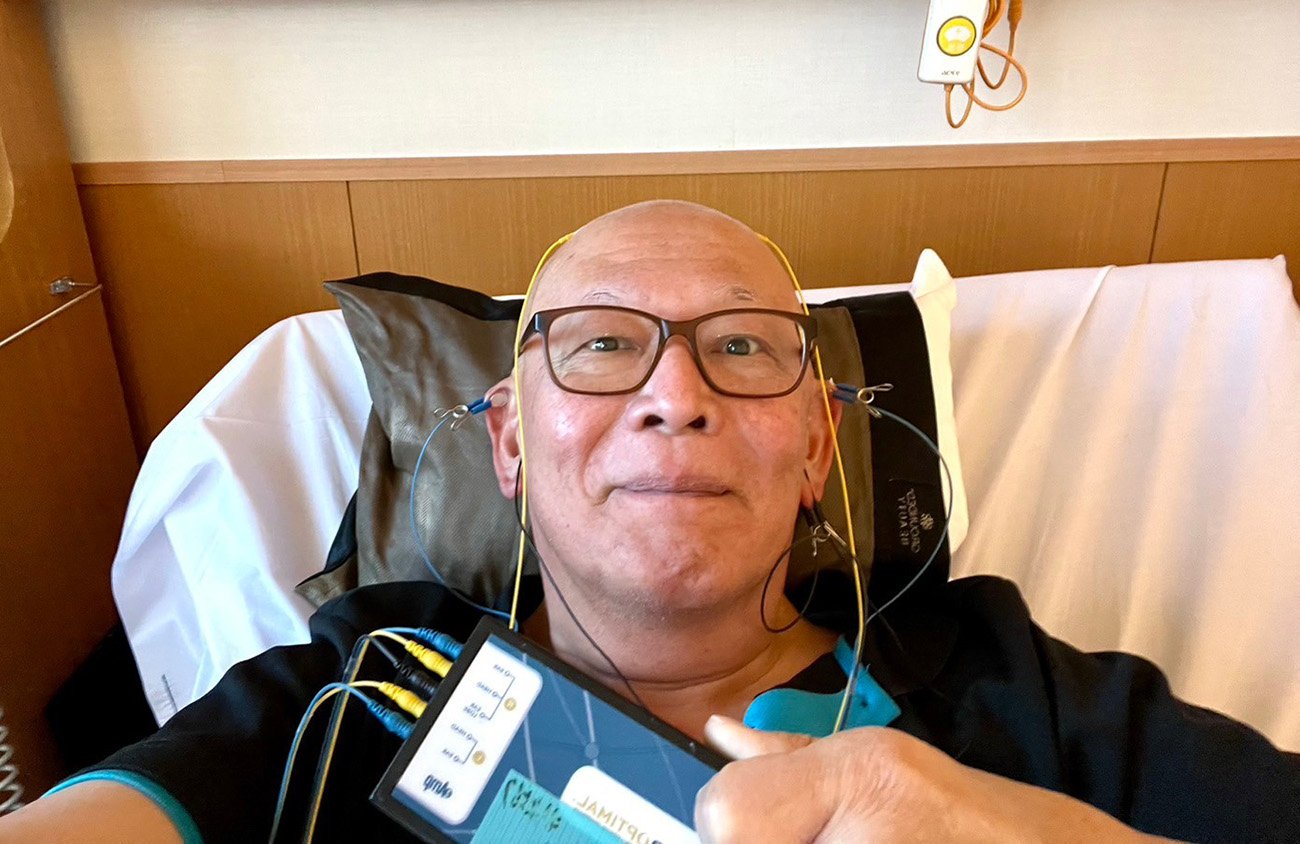Chronic Insomnia in China: How Trade Wars and Mass Unemployment Are About to Make It Worse

As economic tensions escalate, sleep health becomes the hidden casualty in a nation already struggling with widespread sleep disorders.
The dimly lit room falls silent as Mr. Zhang stares at the ceiling, another sleepless night stretching before him. At 36, this software engineer from Shenzhen has battled insomnia for years, but recent events have made his condition unbearable. “The company I work for exports almost exclusively to America,” he explains. “With the new tariffs, 90% of our contracts have been canceled. Everyone knows mass layoffs are coming.”
Mr. Zhang is far from alone. China faces a silent epidemic of sleep disorders that research suggests affects between 15% and 38% of the population, depending on assessment methods and regional differences. The pooled prevalence of insomnia in China has been estimated at around 15% according to meta-analysis studies. However, more recent surveys in specific regions like Guangdong have found rates as high as 24.8%. As trade tensions intensify and unemployment rises, sleep experts predict a dramatic worsening of this already troubling situation.
This article examines how recent economic turmoil is creating a perfect storm for sleep disorders in China and how innovative approaches like neurofeedback, audiovisual entrainment, and neurolinguistic programming might offer solutions that traditional Chinese medicine and conventional pharmaceuticals cannot.
The Trade War’s Hidden Victim: Sleep Health
The economic impact of the escalating US-China trade war is making headlines worldwide. Recent developments have been increasingly dramatic, with tariffs on Chinese goods entering the United States reaching 145%, while U.S. goods entering China face 125% tariffs. These staggering numbers represent more than just economic statistics—they translate into real human consequences.
“This is not just about macroeconomics,” explains Dr. Wei Chen, a Beijing Union Medical College sleep specialist. “When people face economic uncertainty, their stress levels increase dramatically. The brain enters a state of hyperarousal, making normal sleep transitions nearly impossible.”
The data supports this connection. China’s urban jobless rate among young people aged 16-24 (excluding students) stood at an elevated 16.5% in March 2025, CNBC, and this figure doesn’t capture the growing anxiety among those still employed but fearing layoffs. The Goldman Sachs analysts quoted in one report noted that “labor market stability remains a critical concern for Chinese policymakers,” highlighting the link between employment and social stability.
The psychological impacts are particularly severe in export-dependent regions like Guangdong and Zhejiang provinces, where tariff increases have hit manufacturing hubs hardest. Companies have reported “massive financial losses” with canceled orders resulting in layoffs, particularly in agriculture and manufacturing sectors that relied heavily on exports to the U.S. market, CNBC.
In a culture where success and work identity are all-consuming, job loss or uncertainty creates psychological distress that manifests physically as sleep disruption. This downward spiral creates a vicious cycle: poor sleep reduces cognitive function and emotional regulation, making it harder to adapt to changing economic circumstances or find new employment opportunities.
The Youth Employment Crisis and Insomnia
The most troubling aspect of China’s current situation is the impact on young workers. Youth unemployment hit a record high of 21.3% in June 2023 before the government changed its statistical methodology. Even with the new calculation method that excludes students, youth unemployment stood at 16.5% in March 2025, StatistaTRADING ECONOMICS.
This demographic is particularly vulnerable to sleep disorders for several reasons. First, they face unprecedented pressure in a job market that doesn’t match their qualifications. Second, many young Chinese professionals have taken on significant debt for education. Third, social and family expectations remain high despite diminished opportunities.
“Young people are entering the workforce during an exceptionally challenging period,” sociologist Dr. Lin Qiang of Shanghai University notes. “They’re caught between family pressure to succeed, massive student loans, and a contracting job market. This creates the perfect conditions for chronic stress and sleep disruption.”
Research on sleep patterns during economic downturns in other countries shows this connection clearly. During the 2008 global financial crisis, insomnia rates increased by approximately 20% in affected regions. With China’s current economic trajectory and the specific vulnerabilities of its labor market, sleep experts project an even more dramatic increase in sleep disorders.

The Neurological Basis of Economically-Induced Insomnia
Understanding how economic stress disrupts sleep requires examining the underlying neurobiological mechanisms. The brain’s sleep-wake regulation system relies on a complex interplay between the circadian rhythm (our internal body clock) and homeostatic sleep pressure (the biological need for sleep that builds during wakefulness).
When a person experiences persistent economic anxiety, several key disruptions occur:
- Hypothalamic-Pituitary-Adrenal (HPA) Axis Activation: Economic stress triggers the body’s fight-or-flight response, leading to increased cortisol production that directly interferes with standard sleep architecture.
- Rumination and Cognitive Arousal: Concerns about job security, financial obligations, and prospects create persistent thought patterns that prevent the mental quieting necessary for sleep onset.
- Disrupted Sleep-Wake Behaviors: Economic pressure often leads to irregular work schedules, increased screen time for job searching, and compensatory behaviors like excessive caffeine consumption, further disrupting sleep.
Studies with EEG monitoring show that economically stressed individuals typically exhibit excessively high-frequency brain activity (beta waves) during periods when they should be transitioning to the slower rhythms (alpha, theta, and delta waves) associated with relaxation and sleep.
“The insomnia we’re seeing isn’t just worry keeping people awake,” explains neurologist Dr. Zhang Wei from Shanghai Sleep Disorders Center. “It’s a fundamental dysregulation of brain electrical activity that becomes self-reinforcing over time. Once established, these patterns don’t simply resolve when the initial stressor is removed.”
This neurological understanding is crucial because it suggests that economic recovery alone may not solve China’s impending sleep crisis. Even if trade tensions ease and employment stabilizes, the entrenched sleep disruption patterns will likely persist without specific interventions, making innovative treatment approaches critical.
Beyond Traditional Solutions: The Neurofeedback Revolution
While Chinese approaches to insomnia have traditionally relied on herbal remedies, acupuncture, and increasingly pharmaceutical interventions, these methods often fail to address the neurological patterns underlying chronic insomnia. This is where neurofeedback—a technique pioneered in the West but gaining traction globally—offers particular promise.
Neurofeedback is a type of biofeedback that uses real-time displays of brain activity to teach self-regulation of brain function. For insomnia treatment, neurofeedback typically targets the sensorimotor rhythm (SMR) in the sensorimotor cortex, which has been shown to improve subjective sleep quality.
The process involves placing sensors on the scalp to measure electrical activity, which is then displayed through visual or auditory feedback. Like operant conditioning, patients learn to increase beneficial brain wave patterns while decreasing hyperarousal-associated ones.
Sleep Recovery, a US-based company specializing in neurofeedback for sleep disorders, has pioneered protocols specifically targeting the dysregulated brain patterns common in economic stress-induced insomnia.
“We’ve seen remarkable success using neurofeedback with clients experiencing insomnia due to job loss or financial stress,” explains David Mayen, Founder and Program Director at Sleep Recovery. “The brain’s electrical patterns during economic anxiety have distinctive signatures that respond particularly well to neurofeedback intervention.”
Their approach focuses on normalizing the ratios between different brainwave frequencies, particularly enhancing alpha waves (8-12 Hz) and sleep spindles while reducing excessive beta activity associated with stress and rumination. This protocol helps restore the brain’s natural ability to transition through sleep stages properly.
Neurofeedback’s noninvasive nature, lack of side effects, and long-lasting results suit China’s current situation. Unlike sleep medications, which often create dependency and lose effectiveness over time, neurofeedback helps retrain the brain’s self-regulatory mechanisms.
Audiovisual Entrainment: A Scalable Solution
While traditional neurofeedback requires specialized equipment and trained practitioners, a related technology called audiovisual entrainment (AVE) offers a more accessible alternative that could be deployed widely across affected regions in China.
Audiovisual entrainment (AVE) uses synchronized flashing light and pulsing sound to guide the brain into specific states associated with relaxation and sleep. Research has shown that AVE can be effective in improving performance and reducing symptoms like anxiety, stress, pain, and insomnia.
The technology works through a “frequency following response” process where the brain’s electrical activity synchronizes with rhythmic sensory stimulation. When exposed to light and sound pulses at specific frequencies, neural activity begins to match these frequencies, guiding the brain from higher-frequency states associated with stress to the lower frequencies needed for sleep.
In a pilot study with older adults who have insomnia, researchers found that a 30-minute AVE program that gradually decreased from 8 Hz (alpha/theta) to 1 Hz (delta) significantly improved insomnia symptoms. After one month of nightly use, 63% of participants no longer met the clinical threshold for insomnia.
This technology has several advantages that make it particularly suitable for addressing China’s impending sleep crisis:
- Cost-effectiveness: AVE devices are relatively inexpensive to produce at scale, making wide distribution feasible.
- Minimal training required: Unlike more complex interventions, AVE can be used at home with minimal instruction.
- Cultural acceptability: The non-verbal nature of the intervention bypasses potential cultural barriers to traditional Western psychological approaches.
- Compatibility with existing practices: AVE can complement, rather than replace, traditional Chinese medicine approaches to sleep.
Sleep Recovery has developed portable AVE devices designed explicitly for economically stressed populations. “We’ve created systems that combine the effectiveness of clinical-grade entrainment with the accessibility needed for widespread adoption,” explains Dr. Jeffery Wilson, Clinical Director at Sleep Recovery. “These devices can be used by anyone, regardless of their prior experience with sleep technology.”
Neurolinguistic Programming: Addressing the Psychological Component
While neurofeedback and audiovisual entrainment address the neurological aspects of economic stress-induced insomnia, the psychological dimension requires intervention. This approach is where Neurolinguistic Programming (NLP) offers complementary benefits.
NLP examines the relationship between how we think (neuro), how we communicate (linguistic), and our patterns of behavior and emotion (programming). For insomnia related to economic stress, NLP provides techniques to interrupt catastrophic thinking patterns and enhance psychological resilience.
Key NLP techniques being adapted for China’s economic insomnia crisis include:
- Reframing: Changing the perception of job loss or economic uncertainty from catastrophic to challenging but manageable.
- Anchoring: Establishing powerful associations between relaxation states and specific triggers that can be used at bedtime.
- Future Pacing: Mentally rehearsing successful adaptations to economic changes, reducing anticipatory anxiety.
- Submodality Manipulation: Altering economic stressors’ mental representations reduces their emotional impact.
Sleep Recovery has integrated these NLP techniques into audio programs that guide listeners through exercises targeting thought patterns common in economic uncertainty. These programs effectively complement neurological interventions of neurofeedback and AVE, creating a comprehensive approach to sleep restoration.
“The combination of neurofeedback, audiovisual entrainment, and NLP creates a powerful synergy,” notes Mayen. “By simultaneously addressing both the neurological patterns of hyperarousal and the psychological patterns of economic anxiety, we can help people restore healthy sleep even amid ongoing uncertainty.”
Looking Forward to International Cooperation
While China has a robust health infrastructure, collaboration with international sleep specialists offers valuable models that could be adapted for the current crisis. Sleep Recovery’s integrated approach to neurologically based sleep disorders provides one such model.
Their protocol for economic stress-induced insomnia typically includes:
- Assessment: Detailed mapping of brain activity patterns during wakeful rest and sleep onset to identify specific dysregulations.
- Personalized Protocol Development: Creation of customized neurofeedback and AVE programs targeting the individual’s unique pattern of dysregulation.
- Brain Training: Regular sessions of neurofeedback to normalize brain electrical activity, particularly focusing on enhancing alpha and sleep spindle activity while reducing excessive beta.
- Home Practice: Daily use of portable AVE devices reinforces healthy brain patterns and facilitates sleep onset.
- Cognitive Restructuring: NLP-based audio programs specifically addressing economic anxiety thought patterns.
- Progress Tracking: Ongoing assessment of sleep quality through subjective measures and, when possible, objective sleep monitoring.
This comprehensive approach has shown remarkable effectiveness even with clients experiencing severe economic stress. Success rates exceed 80% for significant improvement in sleep quality, with most clients reporting substantial benefits within the first two weeks of treatment.
“What makes this approach particularly valuable for China’s situation is its scalability,” explains Dr. Wilson. “While full neurofeedback protocols require specialized equipment, the core principles can be implemented through more accessible technologies like AVE and audio-based NLP programs that could reach millions of affected citizens.”
Implementation Challenges and Opportunities
Adapting these approaches to China’s specific situation presents both challenges and opportunities. Traditional Chinese medicine views sleep disorders through the lens of energy imbalances, which differs from the neurobiological framework underlying neurofeedback and AVE.
Additionally, the scale of China’s population means that even solutions that work well in smaller contexts must be dramatically scaled to have a meaningful impact. This approach requires technological adaptation, training of local practitioners, and integration with existing healthcare systems.
However, China also has unique advantages that could facilitate rapid implementation. The country’s manufacturing capacity could quickly produce the necessary hardware for AVE devices at scale. China’s robust digital infrastructure would allow for remote monitoring and support, and the centralized healthcare system could efficiently distribute these resources to affected regions.
Furthermore, China’s growing investment in neurological research provides a foundation of expertise that could readily adapt these approaches to local needs. Several university sleep research centers in Beijing, Shanghai, and Guangzhou have already established collaborations with international sleep specialists to explore neurofeedback and related technologies.
The Path Forward
As trade tensions and unemployment continue to impact China’s population, the sleep health crisis demands immediate attention. While economic policy solutions are worked out at the governmental level, the neurological impact of prolonged stress requires specific interventions.
The path forward likely involves a multi-tiered approach:
For Mr. Zhang and millions across China, these approaches offer hope even as trade wars and unemployment create unprecedented challenges. The brain’s remarkable plasticity—its ability to adapt and reorganize—may be the most valuable resource in weathering this economic storm.
For more information about audiovisual entrainment and neurofeedback-based approaches to insomnia treatment, contact Sleep Recovery at 1-800-927-2339 or visit https://sleeprecovery.net.

